The Vilcek Foundation launches the fourth chapter in our series of manga produced in collaboration with Hiroki Otsuka. The manga celebrate our Vilcek Foundation prizewinners, and this latest manga highlights the work of neuroscientist and 2020 Vilcek Creative Promise Prizewinner Viviana Gradinaru. Previous manga focused on architect and urban planner Denise Scott Brown, molecular biologist Mohamed Abou Donia, and musician and filmmaker Blitz Bazawule.
The Manga
In this charming manga, readers see Gradinaru as she grows up in rural Romania, fascinated by the natural world and by her studies in physics. As she advances in her studies, she connects the concepts of physics with the phenomena of the natural world—from the color of the sky to the growth of the plants and animals on her family’s farm. In university, her passion for biology and physics come together as she begins studying how nature and engineering meet in the human brain. Over the past 15 years, Gradinaru has pioneered the use of applied physics to study the brain and to develop tools that can be engaged to treat neurological disorders.
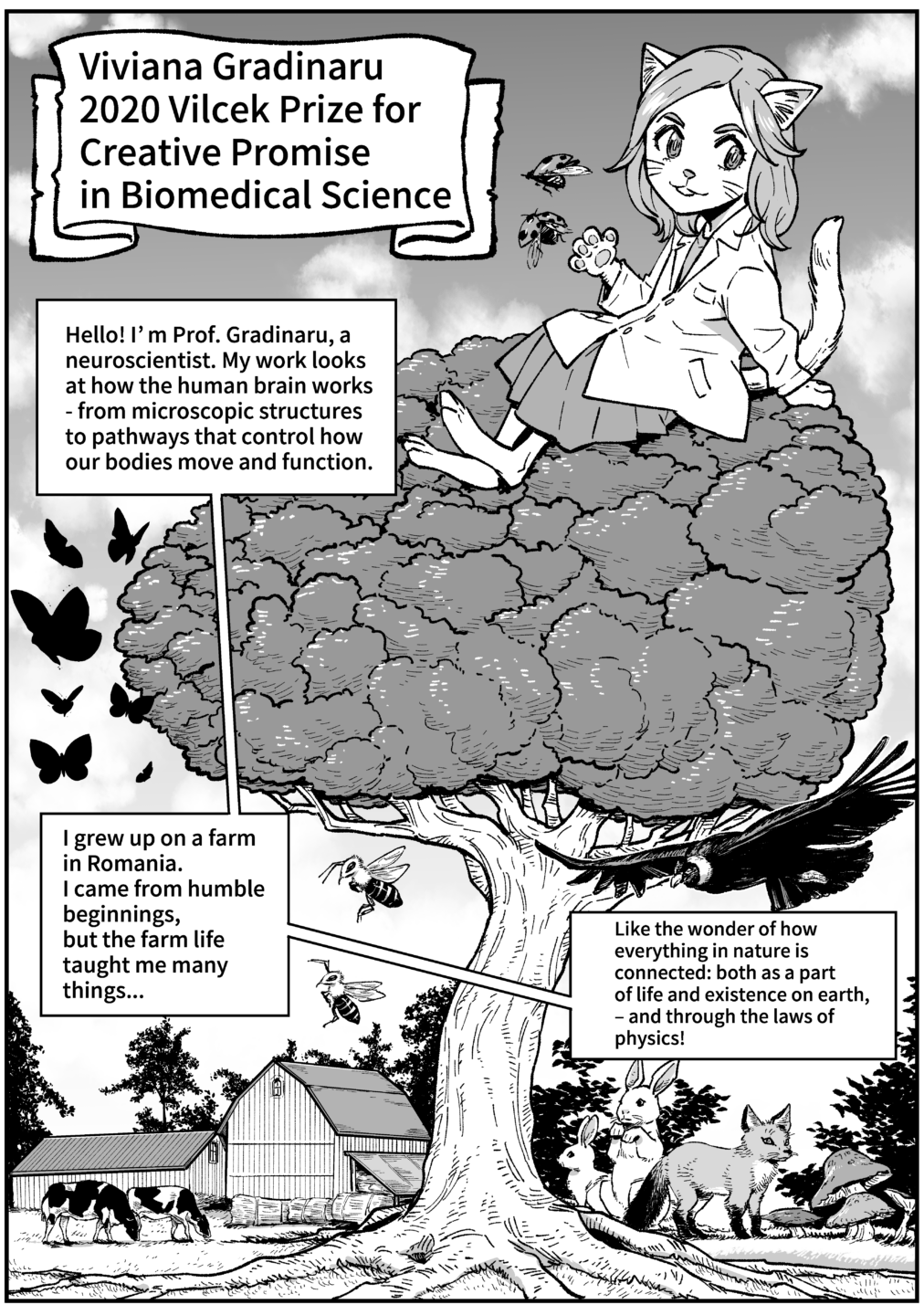

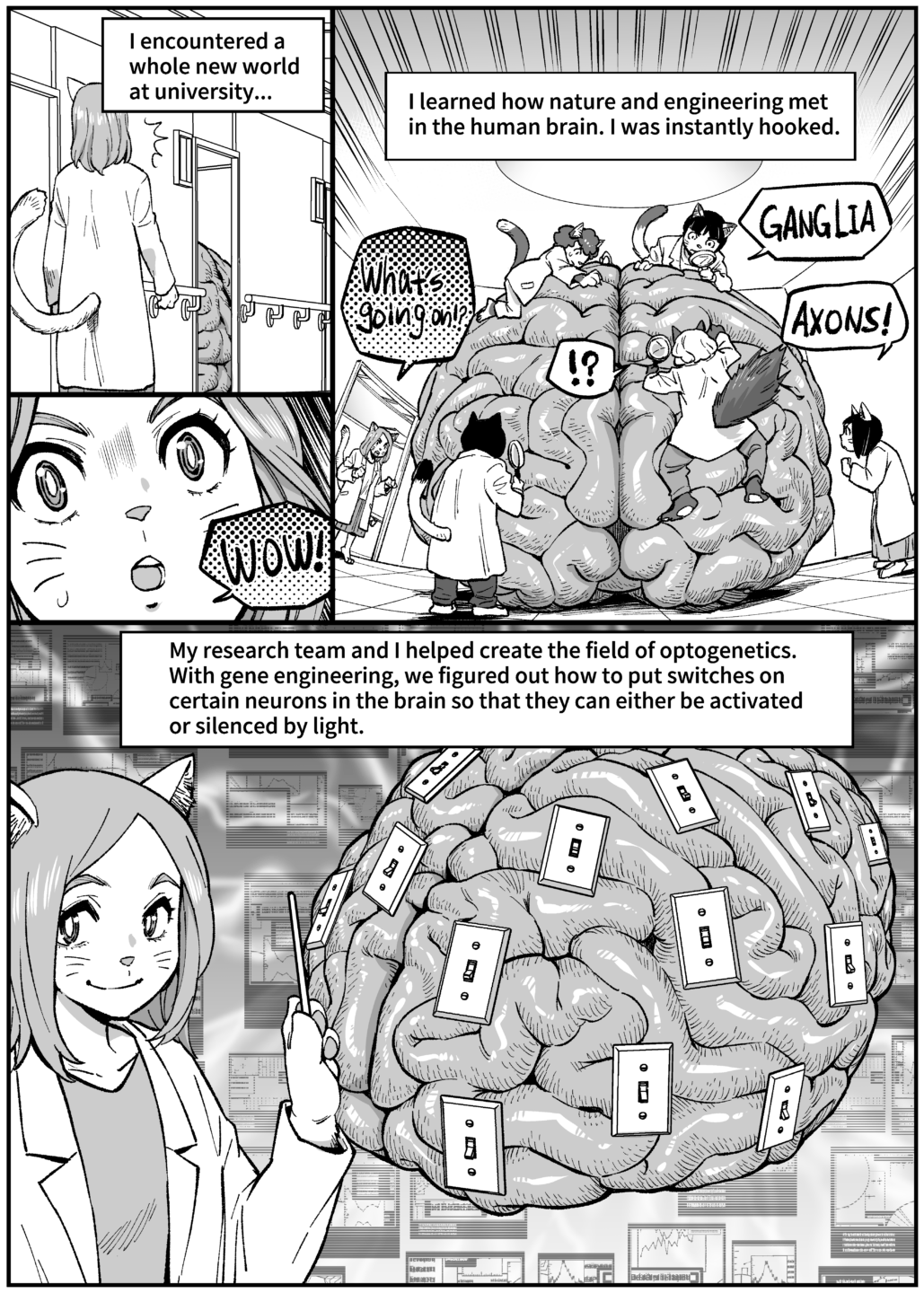

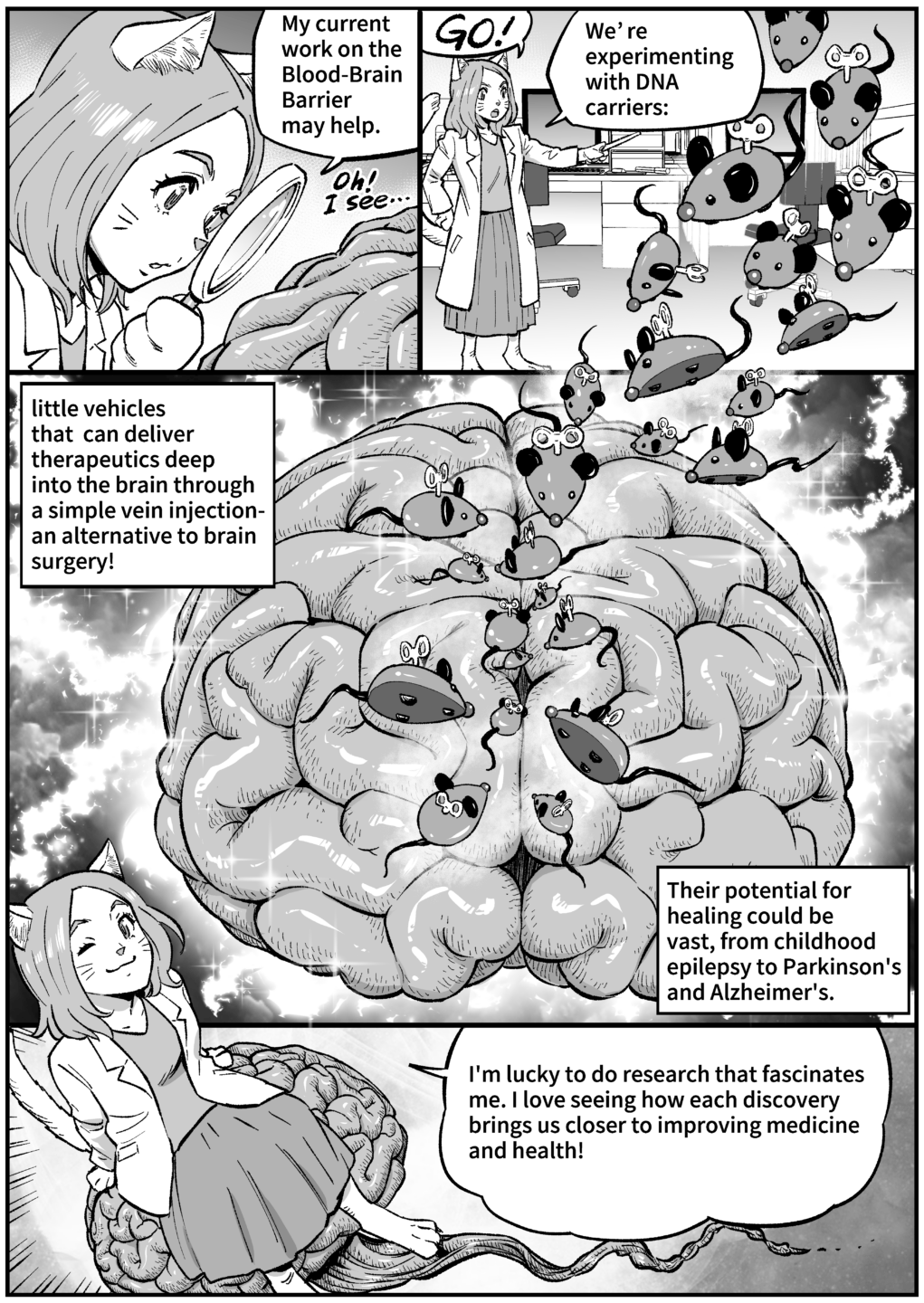
Vilcek Foundation Manga
Launched in 2021 and produced in collaboration with artist Hiroki Otsuka, these biographical manga are part of the Vilcek Foundation’s creative programs initiatives to use art and creative publications to further our mission to celebrate and raise awareness of immigrant contributions to the sciences and society.
The manga use visual and narrative storytelling to highlight our immigrant prizewinners’ lives, and the places, people, and experiences that inspired them along the way. Presented in an accessible graphic format, the manga are suitable for audiences of all ages, allowing children and adults alike to connect with these inspiring immigrant professionals.
Viviana Gradinaru
Viviana Gradinaru is the Lois and Victor Troendle Professor of Neuroscience and Biological Engineering and the director of the Center for Molecular and Cellular Neuroscience at the California Institute of Technology (Caltech). She received the Vilcek Prize for Creative Promise in Biomedical Science in 2020 for developing next-generation tools in optogenetics, tissue clearing, and gene delivery, with potential therapeutic applications in human diseases.
Hiroki Otsuka
Born in Japan, Otsuka has been a professional manga artist since 1994. His work has appeared in major Japanese publications and in galleries and art fairs in New York, Tokyo, and Basel. In 2007 Otsuka was one of 33 Japanese contemporary artists featured in the Japan Society’s centennial exhibition, “Making a Home”; and in 2010 he served as the Japan Society’s first-ever manga artist-in-residence during the exhibition “Graphic Heroes: Magic Monsters.”
_______________________________________________________________________
Manga Transcript
Viviana Gradinaru: 2020 Vilcek Prize for Creative Promise in Biomedical Science
Hello! I’m Prof. Gradinaru, a neuroscientist. My work looks at how the human brain works – from microscopic structures to pathways that control how our bodies move and function.
I grew up on a farm in Romania. I came from humble beginnings,but the farm life taught me many things…
Like the wonder of how everything in nature is connected: both as a part of life and existence on earth, – and through the laws of physics!
I moved to the city for school. I had a hard time adjusting.
But I excelled at my studies. And I loved to invent things! One time I thought of a way to build a roller-coaster on the playground, and convinced my schoolmates to help me…
But it broke, and broke my hand! I learned the dangers of engineering‚ but it didn’t deter me.
I was so lucky to earn a top-notch education in a field that I loved!
At the time, Romania was encouraging young women to pursue studies in physics.
As I grew in my studies,I saw how much physics shaped the things I was curious about on the farm as a child – from the color of the sky, to the way animals and plants grow.
I encountered a whole new world at university…
I learned how nature and engineering met in the human brain. I was instantly hooked.
My research team and I helped create the field of optogenetics. With gene engineering, we figured out how to put switches on certain neurons in the brain so that they can either be activated or silenced by light.
Most activity happens deep within the brain. We needed to find a way to visualize how neurons in the brain connect.
I found a way to make brain tissue clear, like glass, allowing us to see these patterns for the first time:
the connected branches of neural trees, a forest of thinking and moving and feeling.
Now that we could see problems deep within the brain, we could study how to fix them. But we soon found that there’s a protective wall, a barrier, that keeps most medicines from slipping in from the blood vessels to the brain.
My current work on the Blood-Brain Barrier may help.
We’re experimenting with DNA carriers:
…little vehicles that can deliver therapeutics deep into the brain through a simple vein injection – an alternative to brain surgery!
Their potential for healing could be vast, from childhood epilepsy to Parkinson’s and Alzheimer’s.
I’m lucky to do research that fascinates me. I love seeing how each discovery brings us closer to improving medicine and health!
Related News
Biyu J. He: “Conscious experience is the root of who we are”
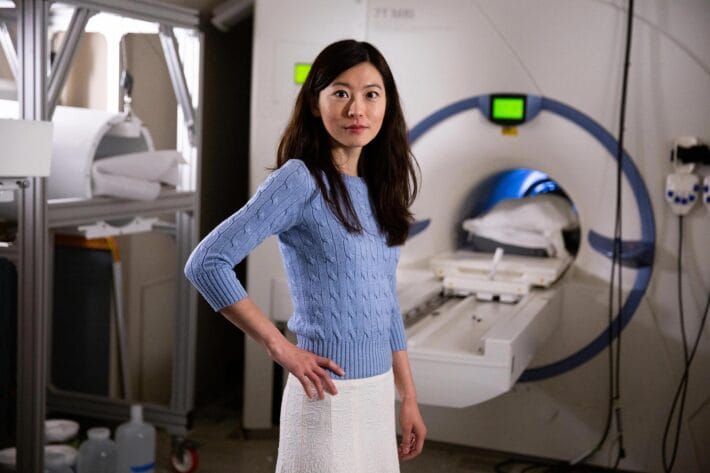
Viviana Gradinaru: “Make Yourself Useful.”
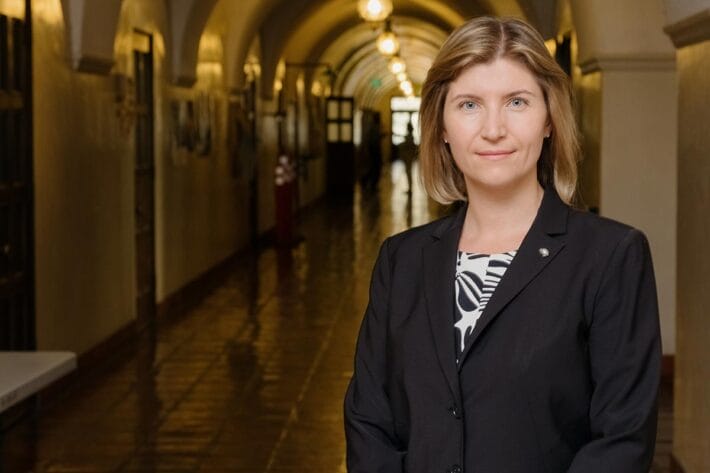
From Survivor to Healer: Jeanne T. Paz Fights for a Cure

You may also be interested in
Tomasz Nowakowski
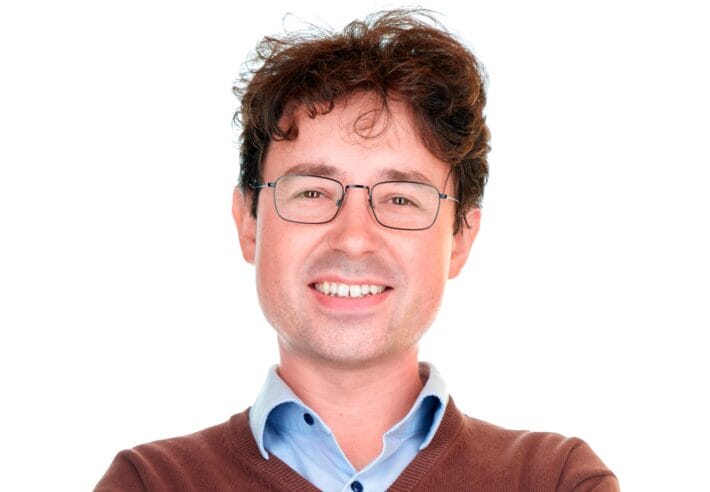
Viviana Gradinaru

Jeanne T. Paz
